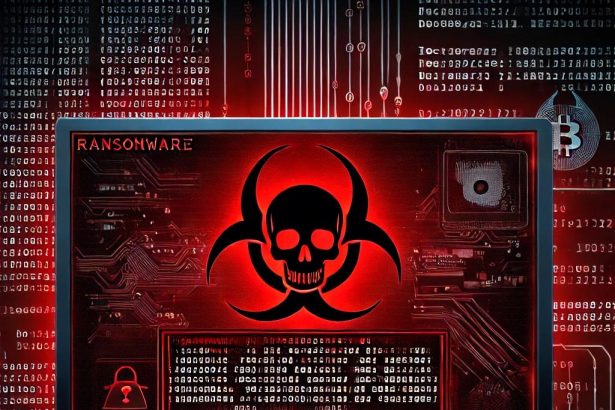Anubis is an advanced ransomware-as-a-service (RaaS) threat emerging in late 2024 and active through mid-2025. This hybrid malware doesn’t just encrypt your files—it can also permanently wipe them, making recovery impossible even after paying a ransom.
Threat Overview
Anubis is modular and customizable, offering a unique wipe mode that deletes file contents while preserving file names and extensions. Distributed via spear‑phishing campaigns, it equips operators with multiple exploitation paths—from encryption and data exfiltration to file destruction—all delivered with administrative privilege escalation.
Threat Details Table
| Category | Details |
|---|---|
| Threat type | Ransomware-as-a-Service (RaaS) with Dual Encryption & Wiper |
| Encrypted file extension | Varies (typically original extensions retained in encrypted form) |
| Ransom note filename(s) | Varies by campaign; unspecified in public reports |
| Detection names | Detected by Trend Micro, Dark Reading, InfoSecurity |
| Symptoms of infection | Files renamed/encrypted, shadow copies deleted, ransom note displayed, possible wipe of data |
| Damage & distribution | Double impact: encryption plus file destruction via phishing |
| Danger level | Critical – file loss irreversible without backups; high extortion risk |
| Removal tool | SpyHunter – Download SpyHunter |
Deep Dive: How Anubis Works
How I Got Infected
Anubis typically gains access through spear‑phishing messages impersonating trusted sources. It tricks users into opening malicious attachments or clicking links, launching the payload.
What It Does
Once executed, Anubis:
- Checks for and requests admin privileges to broaden its impact.
- Deletes Volume Shadow Copies, eliminating most file recovery options.
- Encrypts data using strong algorithms.
- Optionally activates wipe mode, stripping files of content (0 KB) while leaving names intact—wrecking chances of recovery even if ransom is paid.
Why You Should Worry
- The wipe mode feature ensures data destruction is final, increasing psychological and practical pressure to comply.
- Active targeting of healthcare, engineering, and construction sectors across Australia, Canada, Peru, and the US shows a scope of opportunistic victims.
- Its flexible affiliate model offers negotiable revenue splits—up to 80%—attracting more skilled attackers.
Ransom Note (Example)
While variants differ, ransom notes typically contain payment instructions, deadlines, and threats of data destruction or exposure. They escalate urgency by referencing the wipe mode and the impossibility of recovery post‑encryption.
Manual Ransomware Removal Process
Important: Manual removal is recommended only for experienced users, as incorrect actions can lead to data loss or incomplete removal of the ransomware. If unsure, consider the SpyHunter Removal Method for a guided, automated solution.
Step 1: Disconnect from the Internet
- Immediately disable Wi-Fi or unplug the Ethernet cable to prevent the ransomware from communicating with remote servers.
- This can prevent additional encryption or further infections.
Step 2: Boot into Safe Mode
For Windows Users
- Windows 10/11:
- Press Windows + R, type
msconfig, and press Enter. - Under the Boot tab, select Safe boot and check Network.
- Click Apply, then OK, and restart your PC.
- Press Windows + R, type
- Windows 7/8:
- Restart your PC and press F8 repeatedly before Windows starts.
- Select Safe Mode with Networking and press Enter.
For Mac Users
- Restart your Mac and hold the Shift key immediately after the startup chime.
- Release the key when the Apple logo appears.
- Your Mac will boot in Safe Mode.
Step 3: Identify and Terminate Malicious Processes
Windows
- Open Task Manager by pressing Ctrl + Shift + Esc.
- Look for unusual processes consuming high CPU or memory.
- Right-click on the suspicious process and select End Task.
Mac
- Open Activity Monitor (Finder > Applications > Utilities > Activity Monitor).
- Look for unknown or high-resource-consuming processes.
- Select the suspicious process and click Force Quit.
Step 4: Delete Ransomware Files
Windows
- Open File Explorer and navigate to:
C:\Users\[Your Username]\AppData\LocalC:\Users\[Your Username]\AppData\RoamingC:\Windows\System32
- Identify and delete suspicious files (randomly named or recently modified items).
- Clear temporary files:
- Press Windows + R, type
%temp%, and hit Enter. - Delete all files in the Temp folder.
- Press Windows + R, type
Mac
- Open Finder and select Go > Go to Folder.
- Type
~/Library/Application Supportand check for unfamiliar files or folders. - Remove unknown
.plistfiles from~/Library/LaunchAgents.
Step 5: Remove Ransomware Entries from Registry or System Settings
Windows
- Press Windows + R, type
regedit, and hit Enter. - Navigate to:
HKEY_CURRENT_USER\SoftwareHKEY_LOCAL_MACHINE\Software
- Identify and delete ransomware-related registry entries.
Mac
- Open System Preferences > Users & Groups.
- Select the Login Items tab and remove any unknown startup programs.
- Check
~/Library/Preferencesfor malicious settings.
Step 6: Restore System Using a Backup or Restore Point
Windows
- Press Windows + R, type
rstrui, and press Enter. - Choose a restore point from before the infection and proceed.
Mac
- Restart your Mac and enter macOS Utilities by holding Command + R.
- Select Restore from Time Machine Backup and restore a safe backup.
Step 7: Attempt to Decrypt Files
- Check No More Ransom (www.nomoreransom.org) for available decryption tools.
- If unavailable, restore files from backups.
Automated Ransomware Removal with SpyHunter
If manual removal is too complex or risky, SpyHunter offers a safer, automated method for detecting and removing ransomware.
Step 1: Download SpyHunter
- Get SpyHunter from the official Enigma Software website.
Step 2: Install SpyHunter
- Open the downloaded file (
SpyHunter-Installer.exeor.dmgfor Mac users). - Follow the installation prompts.
- Launch SpyHunter upon completion.
Step 3: Run a Full System Scan
- Click Start Scan Now to detect malware and ransomware.
- Wait for the scan to complete and review detected threats.
Step 4: Remove Detected Ransomware
- Click Fix Threats to remove identified ransomware components.
- SpyHunter will clean your system automatically.
Step 5: SpyHunter’s Custom Malware HelpDesk
- If ransomware persists, use SpyHunter’s Malware HelpDesk for custom malware fixes.
Step 6: Restore Files
- Use backups stored on external drives or cloud storage.
- If no backup is available, check No More Ransom for decryption tools.
Preventing Future Ransomware Attacks
- Keep backups: Use cloud storage or an external hard drive.
- Install a reliable security tool: SpyHunter offers real-time protection against malware.
- Enable Windows Defender or Mac security features for additional protection.
- Avoid phishing emails and unknown attachments.
- Regularly update Windows, macOS, and installed applications.
Final Assessment
Anubis marks a concerning shift in ransomware evolution. Its dual-threat capability—encryption paired with irreversible data wiping—makes it uniquely dangerous. If you’re hit, restoring from offline backups is your only safe recovery route. SpyHunter can remove the malware, but cannot restore wiped data. Prevention is absolutely crucial.




